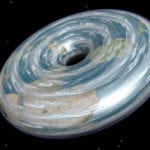 Weird Stuff
Weird Stuff  Weird Stuff
Weird Stuff  Health
Health Ten Confounding New Inventions from the World of Biomedicine
 Creepy
Creepy 10 Death Superstitions That Will Give You the Creeps
 Movies and TV
Movies and TV 10 Movies That Get Elite Jobs Right, According to Experts
 Weird Stuff
Weird Stuff 10 Times Real Laws Were Based on Bizarre Hypotheticals
 Animals
Animals 10 Inspiring Tales of Horses Being Human
 Mysteries
Mysteries Top 10 Haunting Facts About the Ghost Ship MV Alta
 History
History 10 Surprising Stories About the Texas Rangers
 Humans
Humans 10 Philosophers Who Were Driven Mad by Their Own Theories
 Miscellaneous
Miscellaneous 10 Video-Game-Worthy Weapons and Armors from History
 Weird Stuff
Weird Stuff 10 Warning Labels That Exist Because Someone Actually Tried It
 Health
Health Ten Confounding New Inventions from the World of Biomedicine
 Creepy
Creepy 10 Death Superstitions That Will Give You the Creeps
Who's Behind Listverse?

Jamie Frater
Head Editor
Jamie founded Listverse due to an insatiable desire to share fascinating, obscure, and bizarre facts. He has been a guest speaker on numerous national radio and television stations and is a five time published author.
More About Us Movies and TV
Movies and TV 10 Movies That Get Elite Jobs Right, According to Experts
 Weird Stuff
Weird Stuff 10 Times Real Laws Were Based on Bizarre Hypotheticals
 Animals
Animals 10 Inspiring Tales of Horses Being Human
 Mysteries
Mysteries Top 10 Haunting Facts About the Ghost Ship MV Alta
 History
History 10 Surprising Stories About the Texas Rangers
 Humans
Humans 10 Philosophers Who Were Driven Mad by Their Own Theories
 Miscellaneous
Miscellaneous 10 Video-Game-Worthy Weapons and Armors from History
10 Utterly Spectacular Volcanoes In Space
There’s no denying it—volcanoes are pretty awesome. As you gaze upon these looming mountains spewing forth fire so hot it causes the ground itself to melt into a gooey pool, you get a sense of just how destructive and chaotic Mother Nature can be. But what’s even cooler than the inspiration for Mount Doom? Space volcanoes. And they’re way more explosive, awe-inspiring, and destructive than anything you’ll find on Earth.
10Olympus Mons
Mars
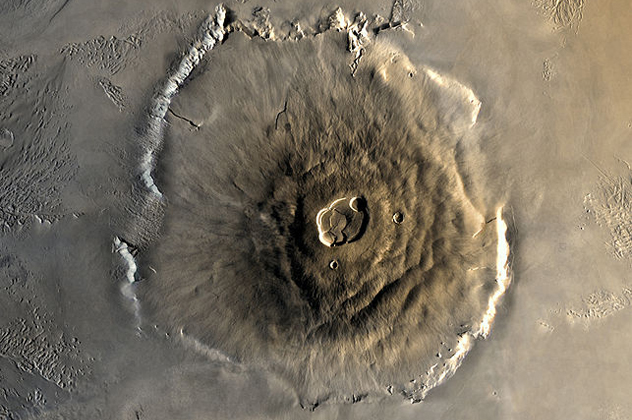
Most people know that Olympus Mons is the tallest mountain and volcano in the solar system, but its size is still difficult to fathom. Standing at a massive 25.7 kilometers (16 mi) high, this Martian monolith is just under three times the height of Everest and its base covers almost the same area as Arizona. Despite Olympus Mons’s massive height, though, it would be remarkably easy to climb, as the average slope is only a 5° incline.
But how did it get so big? Like volcanoes on Earth, Olympus Mons was formed due to cooling lava emerging from hot spots underground. However, unlike Earth, Mars doesn’t have a lot of tectonic motion, so these hot spots never shifted to a different location. The lava just kept building up in the same place until it became the beast of a mountain that is Olympus Mons. In fact, the volcano is so heavy that it actually sinks into the Martian surface, creating a moat around its base.
9Pancake Domes
Venus
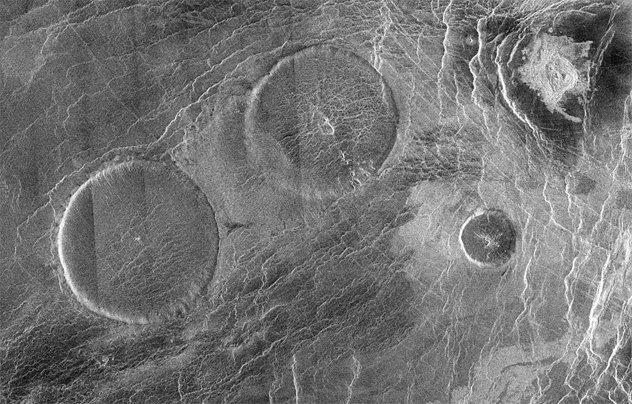
Venus is often described as Earth’s sister planet, but a more accurate description would be Earth’s teenage sister, as the second rock from the Sun is volatile, uninhabitable, and hard to understand. Venus has more than 1,600 major volcanoes, and over 85 percent of its surface area is pure volcanic lava plains. However, most of these volcanoes aren’t your standard lava-spewing hills.
One unusual structure type is referred to as a pancake dome, which typically stand at just under 1 kilometer (0.6 mi) high and range between 22 kilometers (13 mi) and 65 kilometers (40 mi) in width. They are thought to be formed through an eruption of highly viscous lava and spread out evenly due to the high pressure present on Venus. Pancake domes are often seen in clusters but, disappointingly, a group of pancake domes is not called a “stack.”
8Tiger Stripes
Enceladus (Moon Of Saturn)
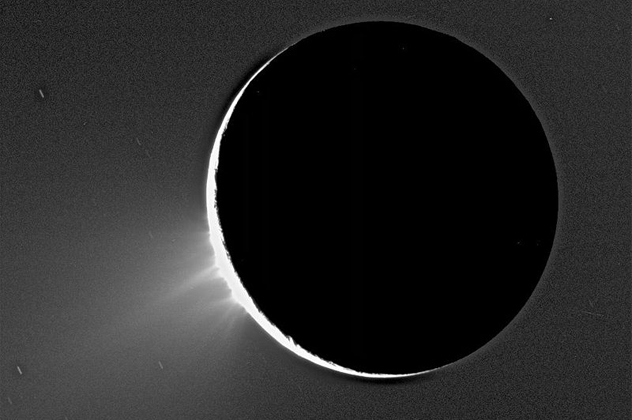
Saturn is by far one of the most interesting planets in our solar system, boasting not only a beautiful and complex ring but also 150 moons (some of which are so small they are given the adorable name of moonlets). One of the bigger members of the Saturn moon family is Enceladus, an icy orb which houses a strange geological phenomenon that astronomers have dubbed “Tiger Stripes.” These stripes are actually four huge ridges across the moon’s surface. They span 130 kilometers (80 mi) each and are roughly 2 kilometers (1.2 mi) wide and 500 meters (0.3 mi) deep.
While these may appear to be just grooves on a bit of ice, infrared imagery shows that they emit a temperature that’s significantly higher than the average surface temperature—because they’re actually cryovolcanoes. Cryovolcanoes are just like normal volcanoes, only instead of puking up molten rock, they instead spurt out water and other chemicals. They are exclusively found on icy bodies in our solar system, but what makes Enceladus’s tiger stripes special is that their eruptions created some of Saturn’s outer rings and still feed into them today.
7Pillan Patera
Io (Moon Of Jupiter)
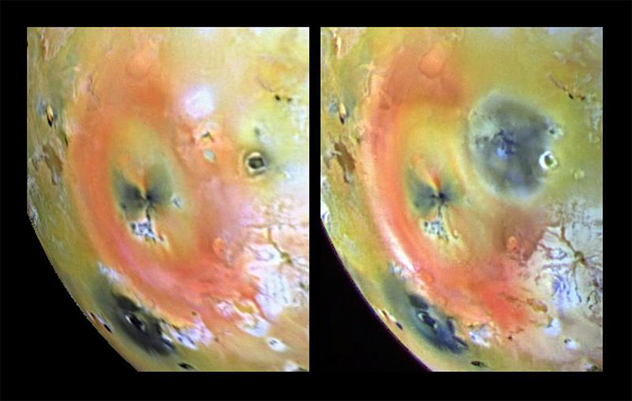
As far as space volcanoes go, Io is the place to be—there’s just so much volcanic insanity going down on this little satellite. Even though Io is roughly the same size as our own Moon, is it utterly riddled with volcanic activity, all of which is explosive, destructive, and completely awesome. One of the most interesting things to happen on Io occurred in a crater called Pillan Patera.
In the summer of 1997, a cataclysmic explosion took place which reached temperatures of 160° Celsius (320° F) and coughed up volcanic clouds that reached 140 kilometers (87 mi) above the moon’s surface. This then spread out to cover an area larger than the area of Greece. To date, the Pillan Patera eruption is the largest volcanic event ever witnessed, and though the aftereffects are somewhat faded, they are still clearly visible to this day.
6Cryovolcanoes
Triton (Moon Of Neptune)
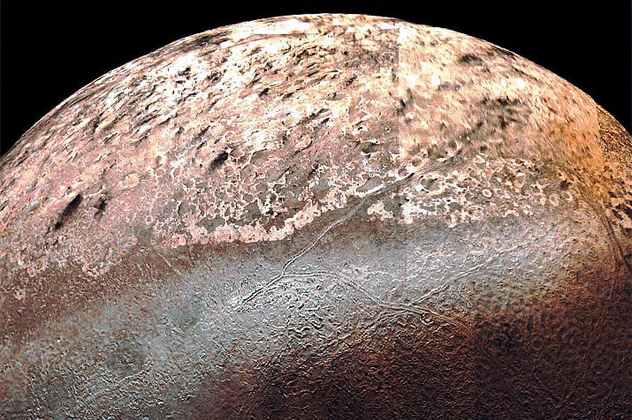
Despite being almost 2.7 billion miles away, we know a surprising amount about Neptune’s largest moon. Given its colossal distance from the Sun, you would be right to assume that Triton has a frozen surface, meaning that it could well be teaming with cryovolcanic activity. Observations made by Voyager 2 show that there are hundreds of geysers all located in a band across the surface. This band is the warmest part of the moon due to heat from the Sun (much like the Earth’s equator).
Even though there is hardly any sunlight getting to Triton, there is enough solar radiation to raise the surface temperature by several degrees, creating the temperature and pressure gradients required for geysers. What makes these geysers so special, though, other than being a near impossibility to begin with, is that they gush out nitrogen gas nonstop for almost a year at a time.
5Tupan Patera
Io
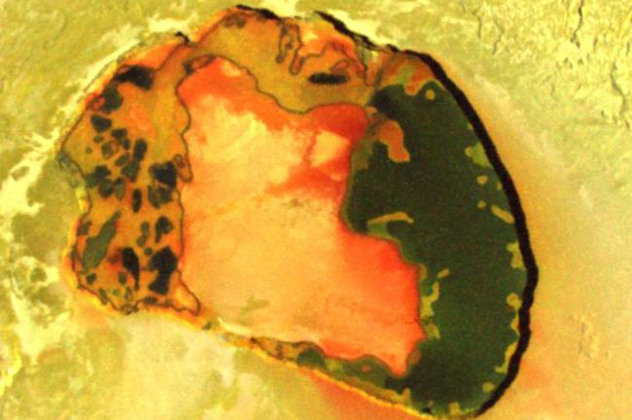
Tupan Patera is a fiery, hellish pit with an island stuck in the middle. At a modest 75 kilometers (46 mi) across, it may not be the largest or most destructive volcano on Io, but it is one that offers the most information about the planet’s composition.
The island in the middle of Tupan Patera has a wonderful red margin surrounding it, most probably caused by sulfur deposits. The volcano has also been photographed numerous times from both the Voyager and Galileo satellites, and the color, shape, and topology of the region all changed significantly over the two decades between them. This indicates that Tupan Patera is very active and could well be leading up to a big explosion any day now.
4Tharsis Montes
Mars
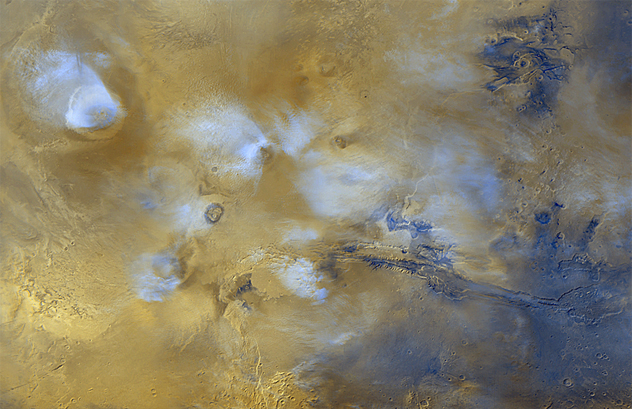
Just a couple hundred miles southeast of the monumental Olympus Mons rest the Tharsis Montes, a collection of three insanely big volcanoes. They range from 375 kilometers (233 mi) to 475 kilometers (295 mi) wide and all rise well above 15 kilometers (9 mi). To put that in context, Earth’s largest volcano is Mauna Loa in Hawaii, which barely covers 120 kilometers (75 mi) in width and stands at a piddly 9 kilometers (5.5 mi).
So what’s so impressive about three ridiculously big volcanoes perfectly aligned in a row? In a very similar mechanism to one found on the Hawaiian islands, studies have shown that the members Tharsis Montes region have actually lined themselves up over the planet’s history. Further studies also indicate that the region may be lying dormant for now and could erupt again sometime in the future.
3Culann Patera
Io
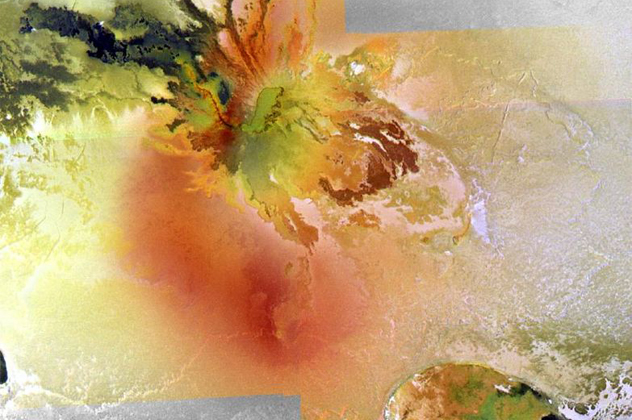
Though not as eventful as the Pillan Patera explosion, Culann Patera is striking because it’s an example of Promethean volcanism, or flow-dominated eruptions. These geological feats are constantly and drastically changing Io’s surface. Whereas explosion-dominated eruptions are over in a matter of hours or days, flow-dominated eruptions last years—even decades—with a steady outpouring of lava which travels thousands of miles across the surface. Because of this, there are lava plains on Io that are bigger than the largest African countries.
And the satellite images of the slow-flows are utterly stunning. The Culann Patera flow was captured by both Voyager in 1979 and Galileo in 1996, and the photos highlighted some whopping changes in the landscape over those 16 years. So it just goes to show, you don’t have to be the solar system’s biggest volcano to destroy a planet.
2‘An Unusual Volcano’
Venus
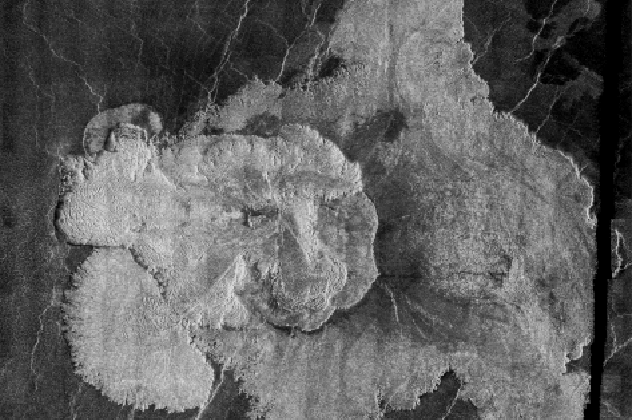
Simply labeled “an unusual volcano,” this may not look all that impressive, but there are a handful of slightly odd things about this volcano that tell us an awful lot about Venus’s elusive past. First of all, it is 100 kilometers (62 mi) in diameter but only stands a mere 1 kilometer (0.6 mi) above the ground. But it’s not just the volcano’s tiny stature that’s weird—the solidified lava planes that surround it are peculiar, too. They form a fan-like shape, indicating that they had a very hard time flowing away from the volcano. This in turn means that the lava coming from the volcano would have been way more viscous than anything else seen on the planet. These are all key signs of non-basaltic lava flow, which is lava that contains a lot of water.
We already have a vague idea about what happened to the water on Venus. Since Venus lacks an ozone layer, ultraviolet light from the Sun was able to penetrate its upper atmosphere, where it broke down water into its individual components—hydrogen and oxygen. Solar wind then stripped away the lighter hydrogen molecules. Somewhere along the line, the planet’s surface heated up and sent most of its water into the air, where it fell victim to this solar stripping.
We don’t really know when all that happened, but we’re slowly picking up clues. Around 750 million years ago, the whole surface of Venus underwent something called a global resurfacing event in which the entire planet became covered in lava. Since then, there have been numerous eruptions and crater impacts on Venus, all of which are used as time estimation devices for geological events. The fact that there is a volcano spewing water-heavy lava provides phenomenal insight into the planet’s environmental and geological history.
1Tvashtar Paterae
Io
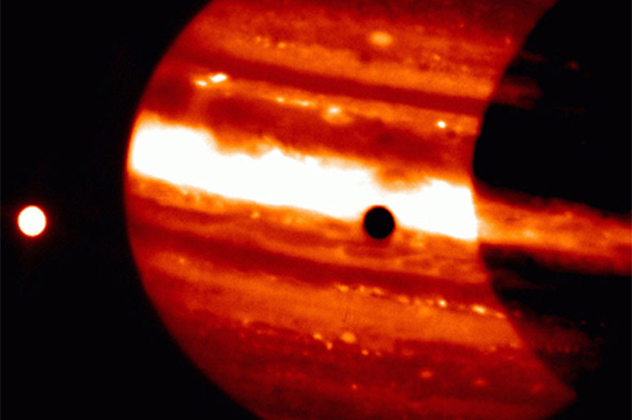
Set near Io’s north pole, Tvashtar Paterae is actually a collection of paterae rather than a solitary entity. This small region has created some of the most spectacular images of extraterrestrial volcanoes we have ever captured. One of the most infamous images of Tvashtar Paterae is the lava lake which originated from one of the smaller paterae and was taken by the Galileo probe back in 1999. Although it looks insignificant at first glance, you have to consider that it’s 25 kilometers (15 mi) across (the size of Manhattan).
However, what makes Tvashtar Paterae so incredible is an eruption that occurred in 2007. Captured in a series of photographs taken by the New Horizons probe, this phenomenal event created volcanic plumes that rose to 330 kilometers (200 mi) above the surface, as shown in these spectacular photos.
My name is Andy, and I like to write things. I write reviews for DeadPress.co.uk and 7BitArcade.com, and I dabble in a bit of satire over at Undergroundmgzn.com. I prefer gigs over clubs, whiskey over wine, and Christina Hendricks over any woman ever made. Ever.




